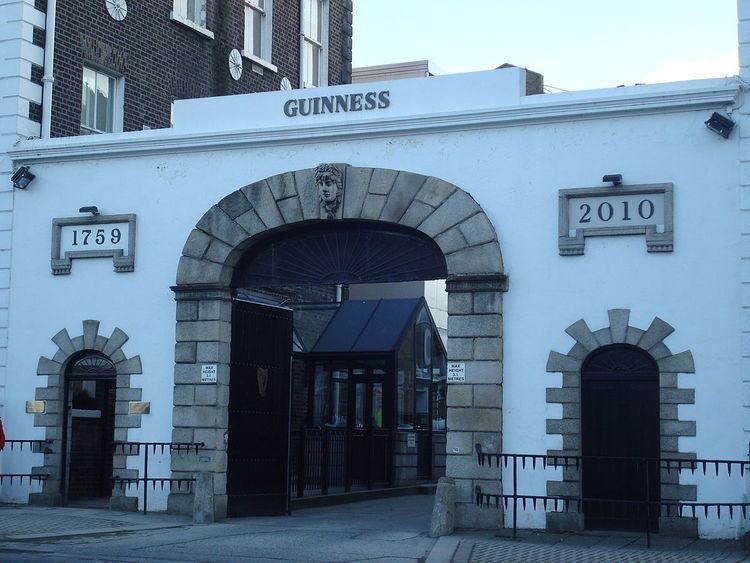Province Leinster | ||
 | ||
Similar Guinness Storehouse, Kilmainham Gaol, The Little Museum of Dublin, St Patrick's Cathedral - Dublin, Old Jameson Distillery | ||
St james s gate boys of blue hill repeal of the union harvest home 101 9 kink
St. James's Gate, located off the south quays of Dublin, on James's Street, was the western entrance to the city during the Middle Ages. During this time it was the traditional starting point for the Dublin pilgrimage Camino to Santiago de Compostela in Spain. Now central to a 64-acre (260,000 m2) industrial area, St. James's Gate was the location of a yearly festival.
Contents
- St james s gate boys of blue hill repeal of the union harvest home 101 9 kink
- Touring the guinness st james s gate brewery storehouse in dublin ireland
- Brewing
- References
Touring the guinness st james s gate brewery storehouse in dublin ireland
Brewing
The St James's area has been associated with the brewing trade since the 17th Century. Many breweries were established in Dublin up to the mid-17th century - to compete with the burgeoning London beer trade. These included a brewery established by Alderman Giles Mee around 1670. Giles Mee was given a lease to the water rights at St James's Gate (called "The Pipes") by Dublin Corporation. These rights passed to his son-in-law, Sir Mark Rainsford, a city alderman who was Mayor of Dublin between 1700 and 1701. Rainsford leveraged these water rights and established a new brewery. He is credited as being the founder of the St. James's Gate brewery. Rainsford produced his own ale on the site as 'Rainsford's Beer and Ale'. However, there were many other brewers in and around St. James's Gate, and Rainsford's enterprise was not significantly different from the others. (Beer and ale were commodity products at the time as they were more commonly consumed than water - which contained contaminants that were removed in brewing.) Sir Mark Rainsford died in 1709, and the lease passed to his son - also Mark Rainsford Esq. In 1715, the Rainsfords put the premises up for lease and it was taken by Captain Paul Espinasse, who became a celebrated beer producer in the area. Espinasse however died in a fall from his horse near the Black Bull Inn at Drogheda in 1750.
For ten years the brewery site was on the market, and nobody showed much interest in it. However, by 1759 the lease was in the hands of a third Mark Rainsford, the grandson of Sir Mark Rainsford. Arthur Guinness was interested in the premises, and on 31 December 1759 the lease was signed over to Guinness for 9,000 years at £45 per year. By that time, the area was already home to several similar small breweries due to its good supply of water. The site has been the location of the Guinness brewery ever since. Guinness has expanded well beyond the original 4-acre lot, and has consequently bought out the property, rendering the 9,000-year lease from 1759 redundant.
